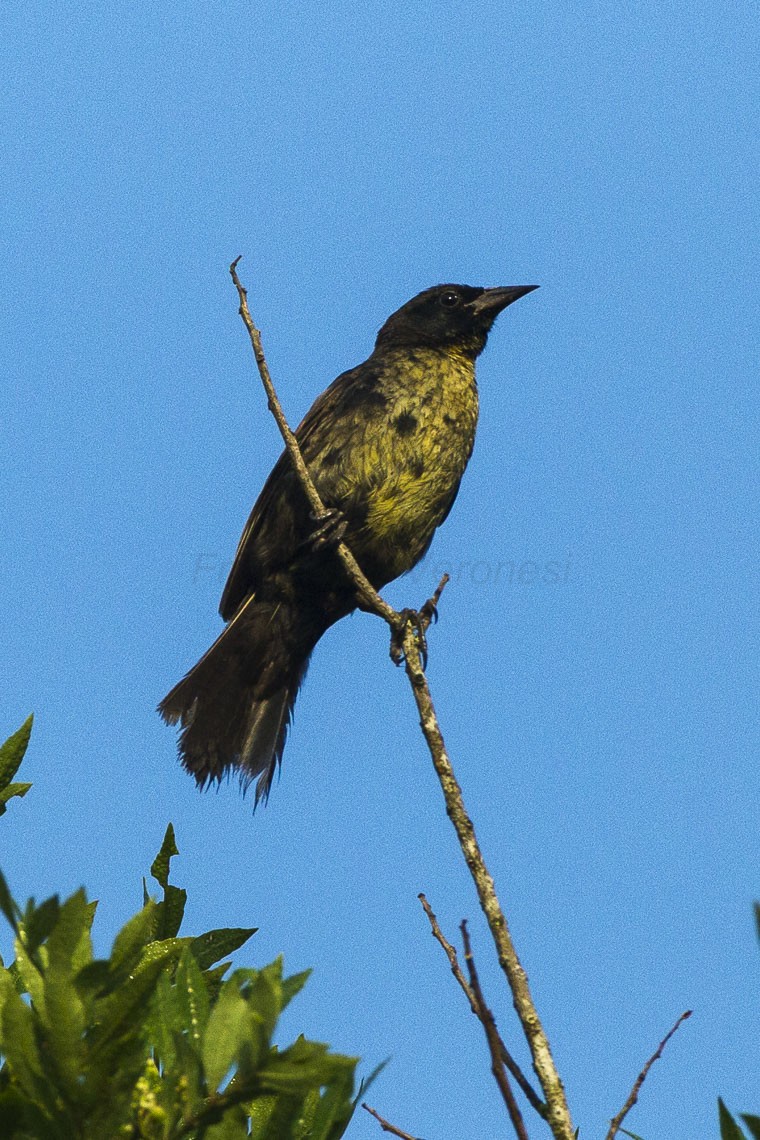Unicolored Blackbird
A species of Agelasticus Blackbirds Scientific name : Agelasticus cyanopus Genus : Agelasticus Blackbirds
Unicolored Blackbird, A species of Agelasticus Blackbirds
Botanical name: Agelasticus cyanopus
Genus: Agelasticus Blackbirds
Content
Description General Info
 Photo By Francesco Veronesi , used under CC-BY-SA-2.0 /Cropped and compressed from original
Photo By Francesco Veronesi , used under CC-BY-SA-2.0 /Cropped and compressed from original Description
The male unicolored blackbird is befitting of its name, with entirely glossy black plumage and dark eyes. However, the species exhibits sexual dimorphism; the female is streaked brown and black with a yellow belly streaked with brown. The face has a dark mask and the wings are reddish-brown edged with black. Females from the lower Amazon region and southeastern Brazil have a generally duller colouration with less rufous wings and less yellow underparts. The legs and the irids are black and the bill is long and sharply pointed. The male could be confused with the velvet-fronted grackle or the chopi blackbird. Its call of this bird is a loud "tchew-tchew-tchew" which is sung from an elevated position, and it also produces various trills and rattling sounds which vary in tone and pitch. 
Size
21 cm
Nest Placement
Shrub
Feeding Habits
Unicolored Blackbird's primary diet consists of arthropods, small vertebrates, and seeds, including insects, cichlid fishes, and seeds of aquatic grasses and crops like maize. Foraging predominantly on floating vegetation, unicolored Blackbird showcases a unique 'rolling' behavior. Often forages in small groups, occasionally joining other icterids.
Habitat
Unicolored Blackbird predominantly inhabits lowland wetland ecosystems in South America, thriving in dense marsh vegetation like Cyperus sedge and Typha cat-tail. It favors environments with a mix of floating plants such as Pistia and extensive wetlands. Adjacent grasslands and agricultural areas are also key habitats, along with low riparian zones near slow-moving waters, typically below 500 meters altitude.
Dite type
Insectivorous
General Info
Feeding Habits
Bird food type
Behavior
This bird usually occurs in pairs and is much less gregarious than the chestnut-capped blackbird which is found in similar swampy habitat. It moves about on floating vegetation and forages among reeds, never straying far from water. 
Distribution Area
The unicolored blackbird is native to South America where its range extends from northern Bolivia and southern Brazil to northern Argentina, including much of the lower Amazon region. It is found in marshes, near the edges of ponds and lakes and in adjacent grassland, and its altitudinal range is up to about 600 metres (2,000 ft). It is especially common in the Brazilian Pantanal. 
Species Status
The total population of the unicolored blackbird, at over 10,000 mature individuals, is believed to be stable and it has a very wide range. It is a fairly common species but its distribution is somewhat patchy. The bird seems to be facing no particular threats and the International Union for Conservation of Nature has assessed its conservation status as being of "least concern". 
Scientific Classification
Phylum
Chordates Class
Birds Order
Perching birds Genus
Agelasticus Blackbirds Species
Unicolored Blackbird